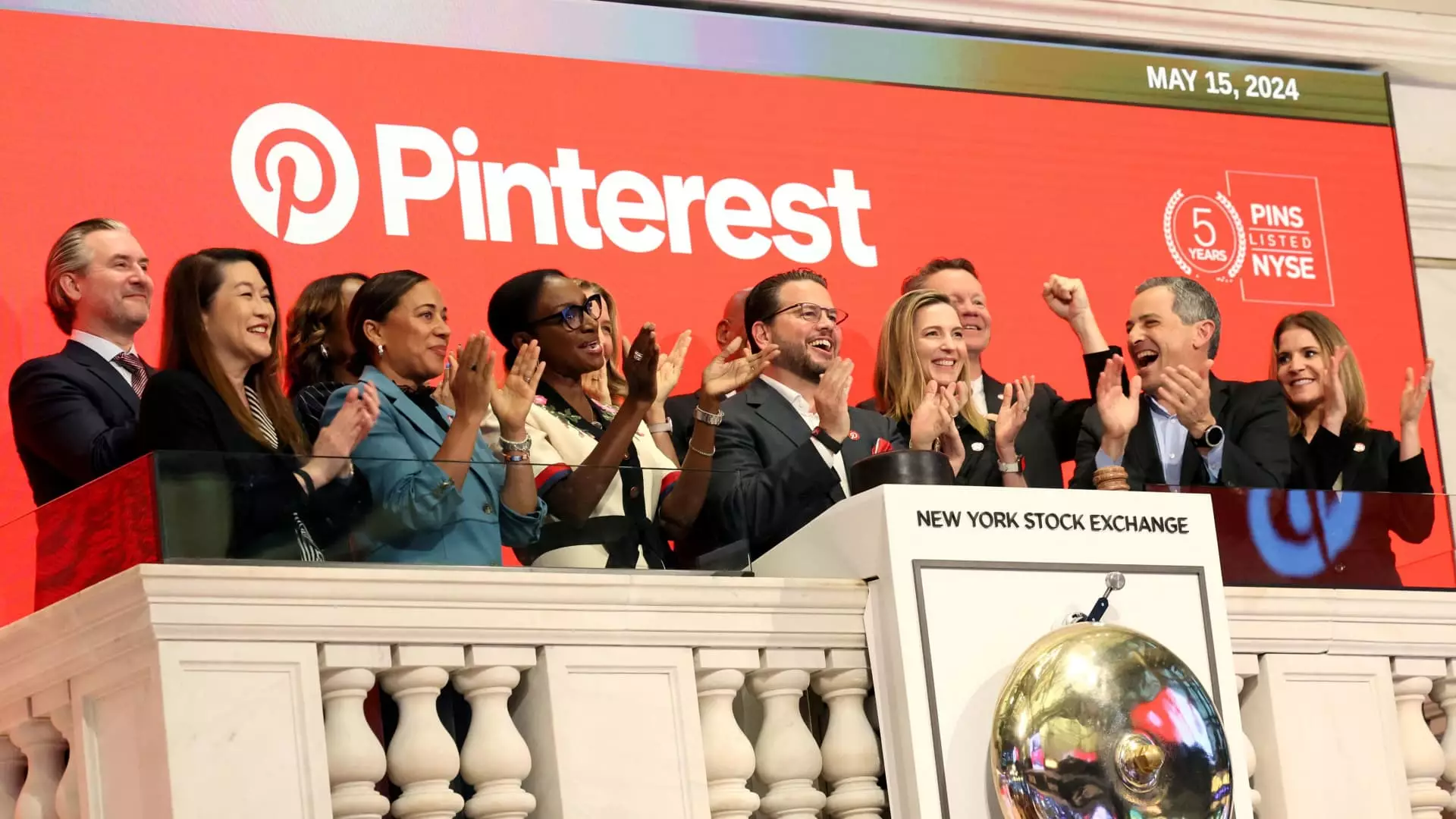Pinterest, a popular social media platform adept at curating visual content, has recently come under the spotlight due to its financial performance in the third quarter. Despite posting better-than-expected earnings, the company’s share prices took a significant hit following a lackluster revenue forecast for the upcoming fourth quarter. This conundrum showcases the challenges that even successful companies face in a rapidly evolving digital landscape.
Analysis of Third-Quarter Performance
In its third-quarter earnings report, Pinterest recorded a revenue of $898 million, slightly surpassing expectations of $896 million. Furthermore, the company achieved an adjusted earnings per share of 40 cents, exceeding the predicted 34 cents. Such performance highlights a strong operational capability and a well-executed business strategy, particularly in light of a 18% year-over-year revenue increase from $763.2 million.
One of the remarkable aspects of this quarterly report is the staggering 354% growth in net income, which climbed to $30.56 million compared to the prior year. This indicates effective cost management despite rising overall expenses, which increased by 17% to $904 million. The uptick in costs was largely attributed to investments in research and development, particularly in the realm of artificial intelligence—a strategic move that could bolster the company’s long-term competitiveness.
While the third-quarter metrics presented an impressive picture, the mood shifted when Pinterest provided its fourth-quarter revenue guidance, projecting earnings between $1.125 billion and $1.145 billion. The midpoint forecast of $1.135 billion fell short of analyst expectations, which averaged around $1.143 billion. This discrepancy ignited concerns among investors, reflected in a stark 15% drop in shares following the announcement.
The sentiment was further exacerbated by Pinterest’s CFO, Julia Donnelly, highlighting ongoing headwinds from the food and beverage advertising sector, a critical component of the consumer packaged goods market. This sector’s anticipated struggles in the fourth quarter raise red flags about Pinterest’s comprehensive sales performance, implying a significant risk to its revenue stream.
Pinterest’s quarterly earnings echo broader trends emerging within the technology and social media sectors. While other major players like Amazon, Meta, and Alphabet have recorded substantial revenue growth in their advertising businesses, Pinterest struggles with uncertain market dynamics. For instance, Amazon reported a 19% year-over-year growth in ad revenue, totalling $14.3 billion, while Meta’s revenue ballooned to $40.59 billion—also a 19% increase. Alphabet echoed this momentum, pinpointing a 10% rise in its advertising revenue.
The juxtaposition of Pinterest’s challenges against this backdrop illustrates the competitive pressure exerted by these tech giants. Challenges in ad spending, particularly in specific sectors like food and beverage, may signal broader economic concerns and changing consumer behavior that could adversely affect other advertising-dependent platforms.
In what may be seen as a move to instill investor confidence amidst disquieting forecasts, Pinterest announced a $2 billion share buyback program. This initiative signals that the company believes its shares are undervalued while also potentially offering a cushion for investors disheartened by the revenue projections. A share buyback can often serve as a tool for stabilizing stock prices, enhancing earnings per share, and instilling confidence amongst shareholders.
The effectiveness of this buyback program, however, hinges on Pinterest’s ability to drive revenue growth and effectively navigate the advertising landscape, particularly as competition intensifies and market dynamics shift.
Pinterest’s latest earnings call encapsulates the duality that many tech companies face: robust growth juxtaposed with market uncertainties. The positive aspects of its performance, including strong revenue growth and impressive net income, are overshadowed by concerns about future guidance and sector-specific challenges. As Pinterest navigates through this intricate web of opportunities and risks, its strategic decisions in the coming quarters will be instrumental in determining its long-term trajectory in the social media realm. Investors must stay vigilant, with both eyes fixed on the evolving economic landscape and the company’s responses to these challenges.

